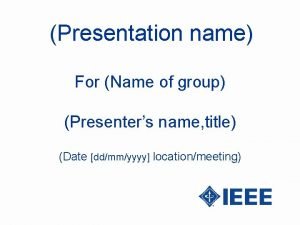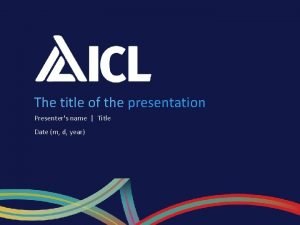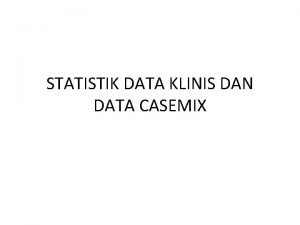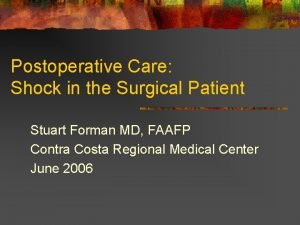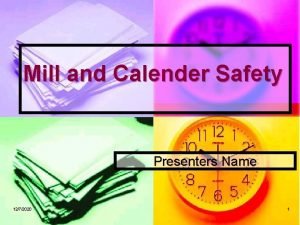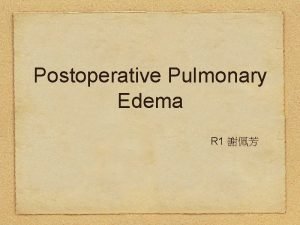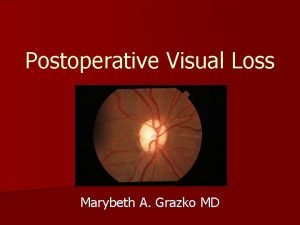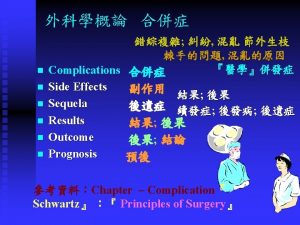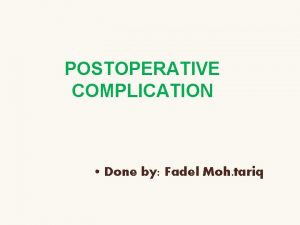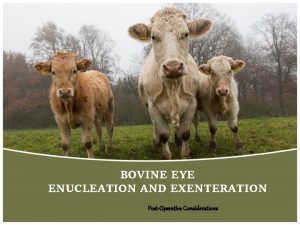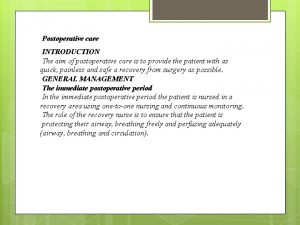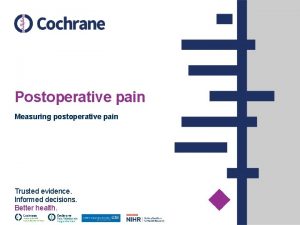Postoperative pseudomeningocele Presenters name Arial 24 pt Meeting













- Slides: 13

Postoperative pseudomeningocele Presenter’s name Arial 24 pt Meeting Arial 24 pt Presenter’s title Arial 20 pt City, Month, Year Arial 20 pt

• Lumbar decompression for canal stenosis • Discharged home and returns a week later • Headache • Swelling under lumbar wound

Differential diagnosis?

• Infection • Pseudomeningocele • Mode of investigation?

Clinical Management?

Pseudomeningocele • “Pseudo” because collection not encompassed by dura • Large collections need revision surgery and repair • Low pressure headaches • Fluctuant swelling • May leak through wound (beta 2 transferrin positive) • Can cause new/recurrent lower limb symptoms • Nerve root herniation from dural defect • Compressive element from pseudomeningocele

Inadvertent durotomy • Revision surgery has a higher rate of dural breach • Tight stenosis and dural outpouching during decompression • When there is excessive bleeding obscuring a dural injury • Kerrison punch • Sharp bone edges • How do you minimise risks in revision surgery?

Prevention in revision surgerys • Check for adhesions during decompression • Work from normal anatomy • Light and magnification • Neuropathies • Balance leaving alone or dissecting adherent areas free • Check no sharp bone edges at end

Dural tear • Do nothing • Direct repair • Patching • Gravity-only drain • CSF diversion

Direct repair • Exposure/magnification/ illumination • Neuropathies • Low suction • May need to extend tear • Reduce herniated neural elements • Watertight closure (Valsalva) • Reinforce with local muscle/fascia and fibrin glue • Close off dead space in all layers

Postoperative management of dural tear • Lie flat • Can mobilize soon if direct repair • Rehydrate • Monitor wound for any leakage • Observe for ongoing headaches • Further leak may require revision surgery/remote CSF drain • Persisting headaches can indicate intracranial subdural haematoma – consider a CT scan

Take-home messages • Inadvertent dural breach is more common in revision surgery • Direct repair is best • Alternative strategies if direct repair not possible • Late presentation with pseudomeningocele can occur • Beta 2 transferrin is very sensitive for CSF • Ongoing leak of CSF through wound risks meningitis

Excellence in Spine
 Title of presenter
Title of presenter Presenter name
Presenter name Nama group presentation
Nama group presentation Presenters name
Presenters name Presenters name
Presenters name Postoperative nursing care plan for cataract surgery
Postoperative nursing care plan for cataract surgery Data klinis adalah
Data klinis adalah Postoperative shock
Postoperative shock Post operative nursing management
Post operative nursing management Atv presenters
Atv presenters The loop presenters
The loop presenters Thank you to all presenters
Thank you to all presenters Calender presenters
Calender presenters Famous british tv presenters
Famous british tv presenters


